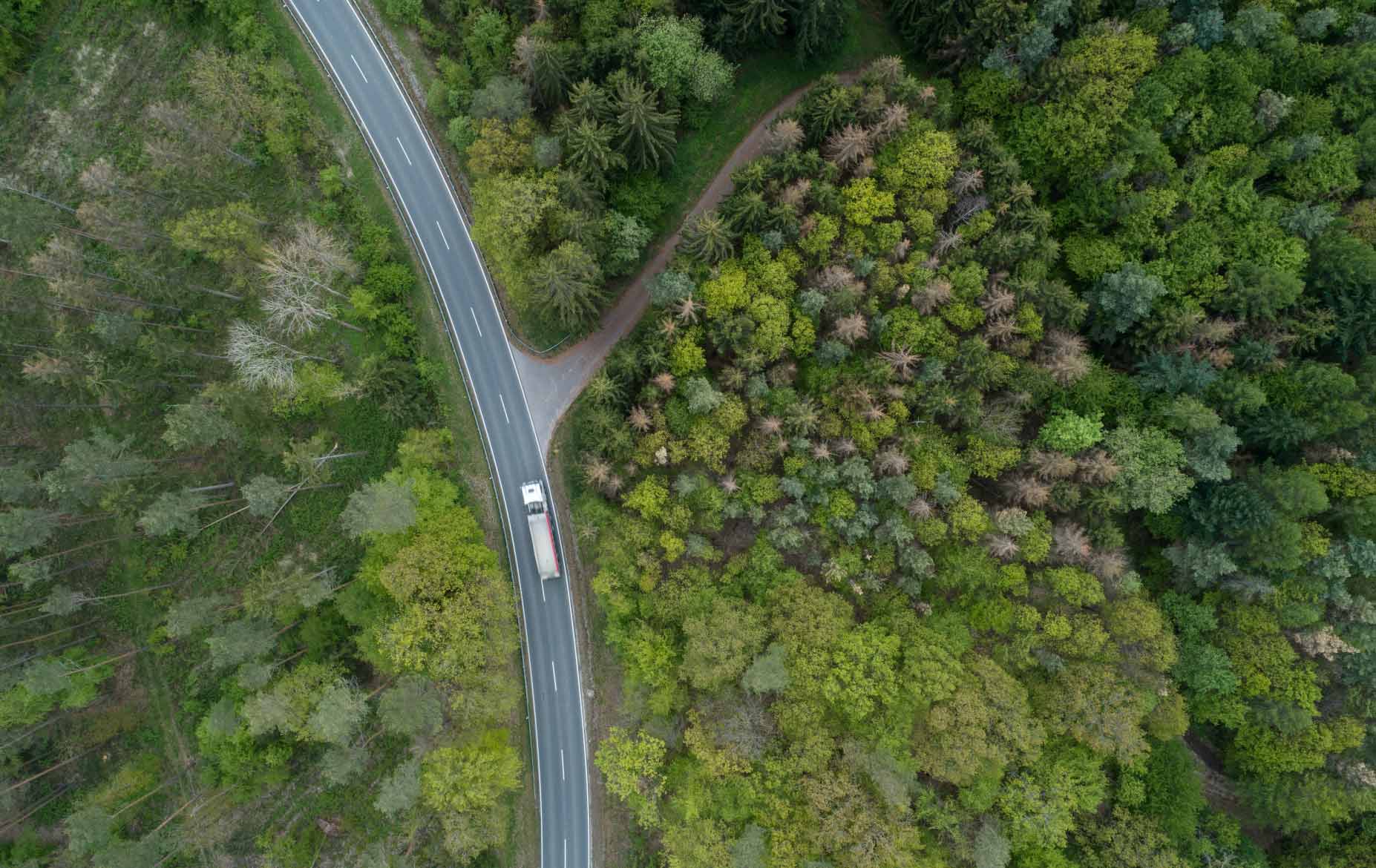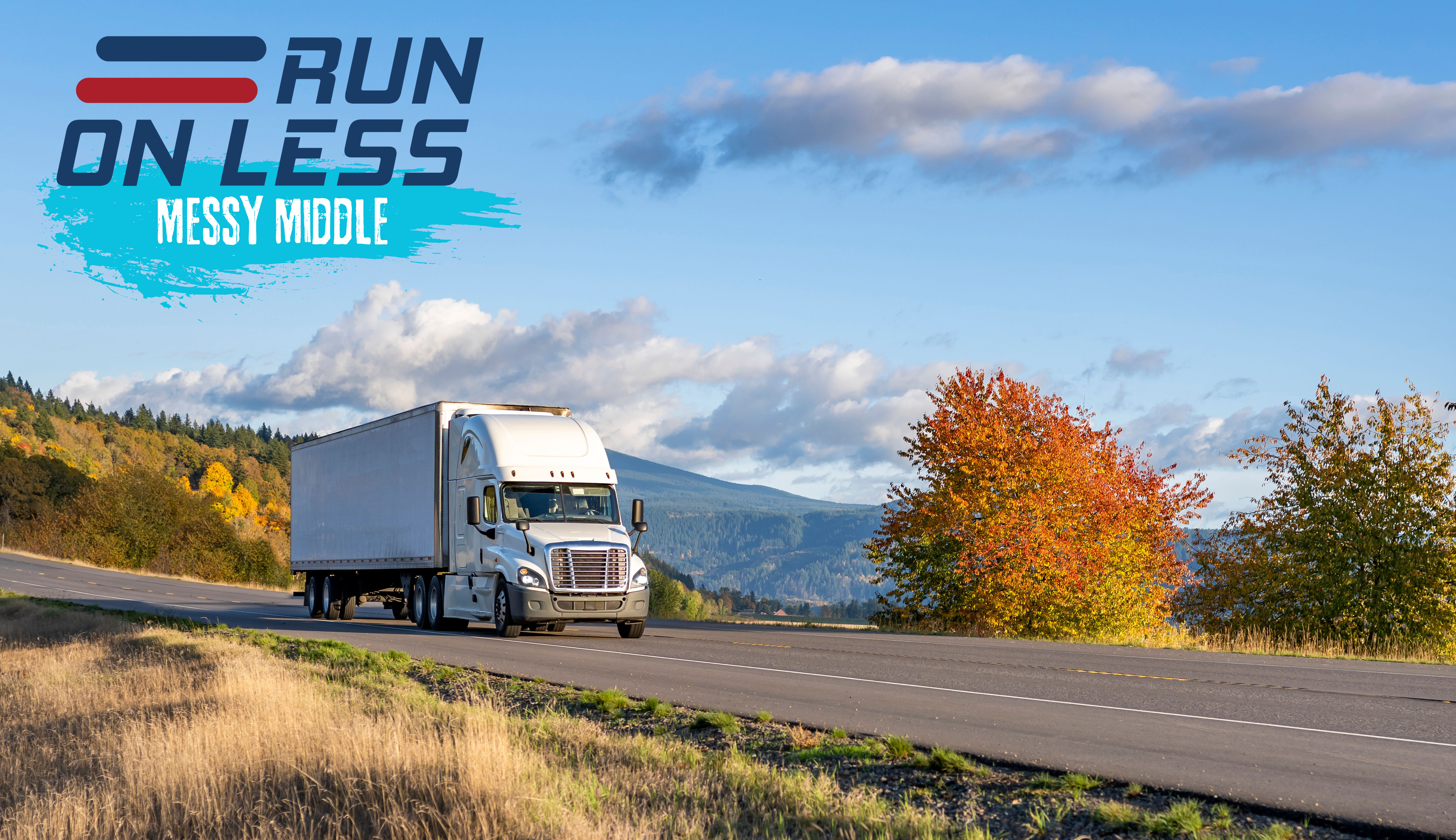What the supertruck program has yielded so far
The SuperTruck program is a partnership between the Department of Energy (DOE) and OEMs to improve heavy-duty Class 8 efficiency and get new, efficient energy technology to market faster.

By Grady Meston
Aug 21, 2024

The SuperTruck program is gearing up for Super Sustainability to encourage OEMs and other manufacturers to combat carbon emissions through the supply chain.
Fleet managers who understand and implement sustainability practices can align their organizations with large OEMs and supply chain manufacturers who are part of the next $162 million SuperTruck phase 3 series funding.
Let’s take a closer look at the current results of SuperTruck, objectives for the next phases and how telematics can help you implement and scale your fleet’s sustainability efforts to better align with these efforts.
Governments and OEMs want sustainable businesses
With rising fuel costs, increased traffic congestion and global support for greener solutions, governments around the world want sustainable solutions for transportation.
For example, cities like Los Angeles, London and Mexico City have implemented low emission zones to help control emissions and improve air quality. Also, funding through programs like SuperTruck and SmartWay offer options for OEMs and governments to support new energy-efficient technology development in the heavy truck space.

SuperTruck sets its sights on sustainability
Launched in 2009, the first phase of SuperTruck aimed to improve heavy-duty truck freight efficiency by 50%.
In the first phase, approximately 38 new technologies were introduced as having the potential for development by 2025. Some of these innovations include combustion technologies, advanced aerodynamics and battery-based idle reduction systems.
SuperTruck 2, the second phase of the program, began in 2016 and should be completed in late 2022. The objectives of this phase are to:
- Double freight efficiency relative to a “best in class” 2009 truck, with a stretch goal of 120%
- Demonstrate 55% Brake Thermal Efficiency on an engine dynamometer
- Develop technologies that are commercially cost effective
The five SuperTruck 2 projects are on track to more than double Class 8 miles per gallon.

The next step is SuperTruck 3, which is in the planning phase. It will fund projects aimed at electrifying freight trucking along with efforts to expand electric vehicle infrastructure and lower vehicle emissions.
What to expect for phase 3 of the SuperTruck program
Phase 3 of the SuperTruck program will help five commercial vehicle manufacturers develop battery-electric vehicle (BEV) and hydrogen fuel cell (FCEV) technologies.
The five OEM’s selected and their topics of focus include:
- Paccar — Awarded $32.97 million to develop 18 Class-8 BEVs and FCEVs with advanced batteries.
- General Motors — Awarded $26.06 million to develop and demonstrate four FCEVs and four BEV Class 4-6 trucks.
- Daimler Trucks North America — Awarded $25.79 million to develop and demonstrate two Class 8 FCEV trucks with a 600-mile range, 25,000-hour durability, that can match payload capacity and range to diesel trucks.
- Ford — Awarded $24.95 million to develop and demonstrate five FCEV Class 6 trucks targeting cost, payload, towing and refueling times to match ICE vehicles.
- Volvo Group North America — Awarded $18.07 million to develop a 400-mile-range Class 8 BEV tractor-trailer.
What does this mean for you and your fleet?
Since programs like SuperTruck support sustainable technologies, fleets can take advantage of these new advancements sooner and implement real solutions to reduce emissions and cut costs.
OEMs that are part of the SuperTruck program split the cost of development 50/50 with the DOE, meaning a better chance of that technology making it to market.
Also, with faster creation of sustainable technology, you can start to plan which new development is right for your business based on your potential return on investment.
With regard to electric vehicles (EVs), we’ll see faster adoption in urban distribution, refuse and regional haul cases because of smaller battery requirements. Battery capacities are expected to increase while charging time, cost and weight are expected to decrease with growing research and development.
Depending on your fleet's applications, increased charging infrastructure may be required before going electric. While many fleets are able to operate solely using their own charging depots, this is not always viable, particularly in long-haul applications. To help expedite this process, governments are making serious commitments and programs to build more charging stations.
The Geotab platform now supports over 300 EV models with rich data such as real-time battery state-of-charge, charging power, charging energy, driving and auxiliary energy.
Prepare today for the green tech of tomorrow
At Geotab, we help fleets reduce their carbon footprint with insights from real-world data that also reduces costs and improves operational efficiency. We can help you on your road to efficiency today so that you’ll be ready to implement the new technologies as they become available.
Download our Practical guide to creating a green fleet policy for Class 8 fleets and learn some of the steps you can take today that can prepare you for a more sustainable future.
Subscribe to get industry tips and insights

Grady Meston is a Marketing Specialist, Commercial Communications
Table of Contents
Subscribe to get industry tips and insights
Related posts

Collision avoidance systems: How fleets prevent incidents and improve safety
December 23, 2025
5 minute read

Run on Less data redefines electric truck viability
December 17, 2025
4 minute read

Telematics device cost: Key factors that determine pricing
November 19, 2025
5 minute read


Strengthen high-value cargo security with advanced telematics
August 12, 2025
4 minute read
